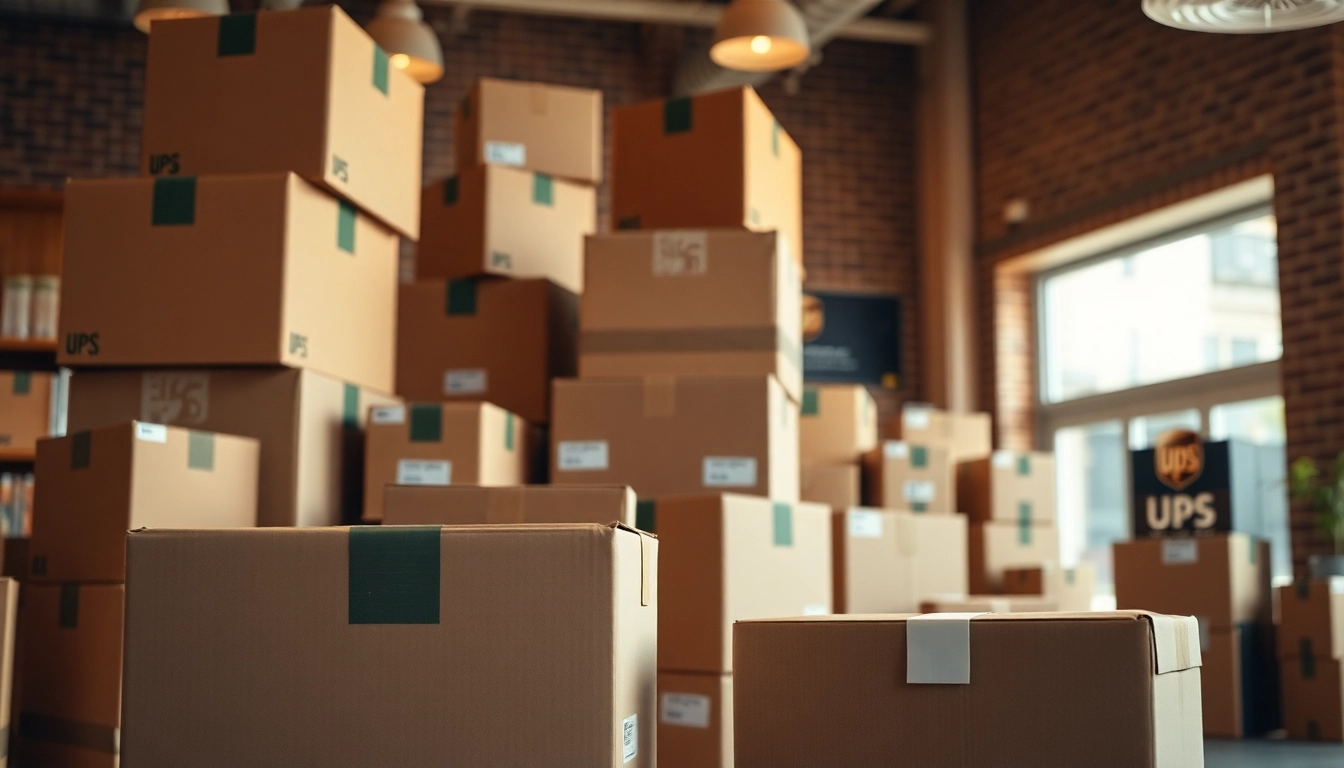
The Essential Guide to Choosing the Right Boxes for Your Shipping Needs
Understanding Different Types of Boxes
When it comes to shipping and storage, the choice of boxes plays a crucial role in ensuring that your items reach their destination safely and securely. Boxes come in a myriad of shapes, sizes, and materials, each tailored to specific needs. Understanding the differences can greatly enhance your packing and shipping experience, saving you both time and money.
Cardboard vs. Plastic: What to Choose
The very first consideration when selecting a box is the material. Cardboard boxes are the most common choice, known for their lightweight nature and recyclability. They are sturdy enough for a variety of shipping needs while being cost-effective. However, they may not withstand moisture or heavy weights.
Plastic boxes, on the other hand, are gaining popularity due to their durability and water resistance. Ideal for long-term storage or shipping sensitive items, these boxes are more robust than cardboard but are also more expensive. They come in various styles, including stackable and collapsible options, which can help maximize space.
Small, Medium, or Large: Finding Your Size
Once you’ve decided on the material, the next step is sizing. Boxes come in various dimensions, generally categorized as small, medium, or large. The size selected should not only accommodate the item but also allow for sufficient padding and insulation to prevent movement during transit.
For smaller items, small boxes work best, allowing you to efficiently use packing material while reducing overall shipping costs. Conversely, large boxes should be reserved for bulky or multiple items. It’s important to strike a balance between box size and the weight of the items being packed. Overly large boxes can lead to increased shipping costs, while boxes that are too small can put your items at risk of damage.
Specialty Boxes: Uniquely Designed Options
In some cases, traditional boxes may not meet your needs. Specialty boxes, such as those designed for shipping wine, electronics, or fragile art pieces, offer enhanced protection tailored to specific items. These boxes often come with built-in padding or dividers that secure the contents, ensuring they arrive in pristine condition.
When choosing specialty boxes, consider the specific requirements of the items being shipped. For instance, consider temperature control for perishable goods or insulated boxes for temperature-sensitive products. Investing in the right type of specialty box can protect your valuables and enhance customer satisfaction by ensuring that items arrive undamaged.
How to Properly Pack Your Boxes
The effectiveness of your boxes is only as good as your packing methods. Proper packing can significantly reduce the likelihood of damage during shipping.
Essentials of Packing Materials
Before packing, gather all necessary packing materials. This includes packing tape, bubble wrap, packing peanuts, and craft paper. Each of these materials has a distinct purpose, from cushioning fragile items to sealing boxes securely.
Start by wrapping fragile items in bubble wrap before placing them inside the box. Use packing peanuts or crumpled paper to fill any empty spaces, preventing movement during transport. When sealing the box, applying several strips of packing tape along the seams will enhance durability.
Layering Methods for Safe Transit
Layering is a critical technique when packing items in boxes. Begin by laying a base of packing material at the bottom of the box, then add heavier items first. This prevents lighter items from being crushed during transit. Each layer should incorporate additional packing materials to absorb shocks and minimize movement.
For fragile items, additional layers of bubble wrap may be necessary. Pay special attention to corners and edges; these are the most vulnerable areas during transport and should be particularly well-padded.
Common Packing Mistakes to Avoid
Even experienced shippers can make mistakes. Common packing errors include overloading boxes, neglecting to fill empty spaces, and using insufficient packing tape. Overloading a box can lead to bursting during transit, while empty spaces can allow items to shift and sustain damage. Consistently check and ensure there is ample padding around all items, and don’t skimp on tape when securing the box.
Another mistake to avoid is not labeling boxes correctly. A clear label can greatly streamline organization, especially if shipping multiple packages. Utilizing waterproof markers can help ensure that labels remain legible throughout the shipping process.
The Importance of Box Quality
Not all boxes are created equally, and the quality of the box can greatly impact the safety of its contents. Invest in high-quality boxes that are designed for specific shipping conditions.
Why Durability Matters in Shipping
Durability is paramount when selecting a box. A robust box can withstand the rigors of shipping, including compression, moisture, and rough handling. Cheap, flimsy boxes might save you money upfront but can cause significant losses in damaged goods and customer dissatisfaction.
Look for boxes that have been tested for strength. The bursting strength, stacking strength, and edge crush test ratings are essential metrics that determine box durability. Choosing boxes that meet or exceed industry standards can provide peace of mind that your items will be secure.
How to Assess Box Strength
To assess the strength of a box, look for its specifications. Many manufacturers provide details regarding the box’s strength ratings, such as ECT (Edge Crush Test) and burst strength classifications. An ECT rating of 32 is typically suitable for most shipping applications, while heavier or more fragile items might require boxes with higher ratings.
You can also perform a simple test to gauge a box’s quality before shipping—try pressing down on its sides. A sturdy box should have some resistance and maintain its shape. If it buckles easily, it’s a sign that you may need a higher quality box.
Signs of a Poor-Quality Box
Identifying signs of poor-quality boxes is crucial in securing your items for shipment. Look for inconsistencies in thickness, tears, or bent edges that suggest past damage or weak construction. If a box feels excessively lightweight or flimsy, it may not withstand the pressures of shipping.
Moreover, be cautious of boxes that have endured exposure to moisture. Wet or damp boxes lose their strength and risk allowing contents to get damaged during transit. Always choose dry, well-constructed boxes, especially for important shipments.
Sustainable Box Options
As environmental concerns increase, opting for sustainable box options is becoming a priority for both businesses and consumers. Not only do eco-friendly boxes reduce waste, but they also appeal to a growing market that prioritizes sustainability.
Eco-Friendly Packaging Solutions
Eco-friendly packaging solutions include boxes made from recycled materials, biodegradable packing peanuts, and plant-based tapes. Companies are increasingly adopting these sustainable options, reducing their carbon footprint and promoting environmental consciousness.
When selecting sustainable boxes, look for those certified by recognized environmental organizations. Not only will this promote responsible shipping practices, but it can also enhance your brand’s reputation among eco-conscious consumers.
Benefits of Using Recycled Material Boxes
Using boxes made from recycled materials offers several benefits. Firstly, they help reduce the need for virgin resources, which can significantly minimize environmental impact. Secondly, they are often more affordable due to lower production costs associated with recycled materials.
Additionally, many consumers today are more likely to purchase from brands that demonstrate eco-friendly practices. Utilizing recycled boxes can bolster your brand image and customer loyalty, driving up sales as a result of ethical consumerism trends.
How to Recycle Your Shipping Boxes
Recycling your shipping boxes is not only good for the environment; it can also be quite simple. Start by breaking down cardboard boxes to save space in your recycling bin. Ensure that all packaging tape and labels are removed to prevent contamination with non-recyclables.
Check with local recycling facilities to understand their guidelines on cardboard recycling. Some may require that boxes remain free from grease or other contaminants, while others may accept them in any condition. Proper recycling practices ensure that your used boxes help create new products rather than contributing to landfill waste.
Cost-Effective Packing Strategies
Optimizing your packing strategies can provide significant savings while improving efficiency. Small changes can yield big results, particularly for businesses that ship regularly.
Buying Boxes in Bulk: Is It Worth It?
Purchasing boxes in bulk can yield substantial cost savings, especially for businesses that frequently ship products. Suppliers often provide discounts for bulk orders, allowing companies to benefit from lower per-unit prices. Furthermore, maintaining an inventory of boxes can reduce last-minute purchases, which may be charged at higher rates.
However, evaluate your storage capabilities before committing to bulk orders. The boxes should be stored in a dry, humidity-controlled environment to ensure that their quality remains intact for future use.
The Impact of Box Design on Shipping Costs
The design of the box can greatly influence shipping costs. Irregularly shaped or oversized boxes can lead to higher postage and freight fees due to dimensional weight pricing policies used by many carriers. Choosing boxes that minimize wasted space and meet carrier guidelines can help ensure cost-effective shipping.
Moreover, consider designs that facilitate stacking and consolidation during transport. Efficient box design can maximize load capacity on shipping vessels, reducing overall shipping costs.
Budget-Friendly Packing Tips for Businesses
For businesses looking to cut packing costs, several strategies can help. Reusing packaging materials, such as bubble wrap or packing peanuts, can decrease purchasing expenses. Engaging in a packaging exchange program with other local businesses can also ensure you have access to used materials without additional costs.
Another effective strategy is to conduct a thorough assessment of your packing processes to identify wasteful practices. Training employees on efficient packing techniques can lead to better resource utilization and reduced material costs over time.
